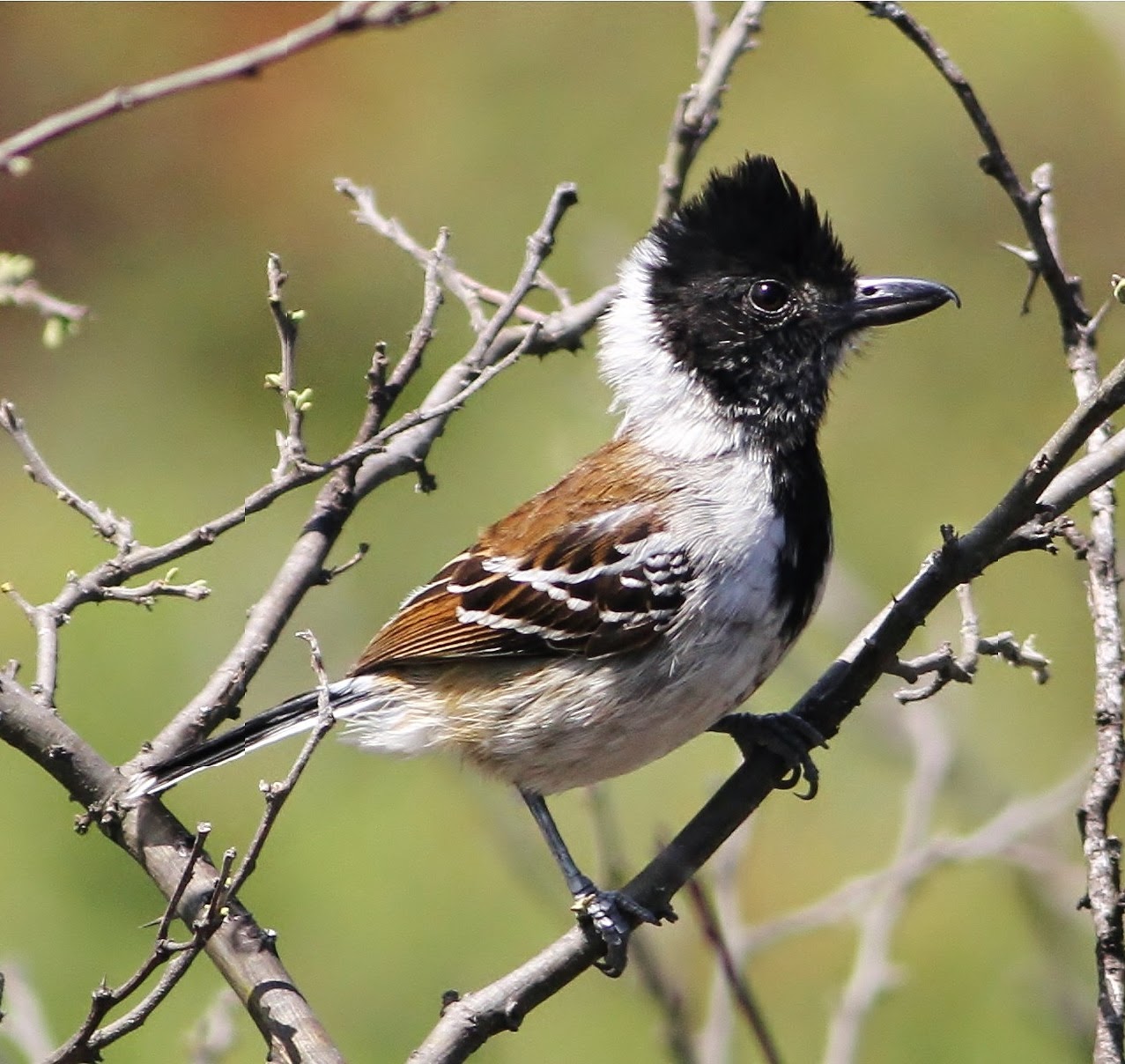 |
| Photo by Rainer Seifert (Internet Bird Collection) |
Common name:
collared antshrike (en); choca-de-coleira (pt); batara de Bernard (fr); batará collarejo (es); fleckengesicht-ameisenwürger (de)
Taxonomy:
Order Passeriformes
Family Thamnophilidae
Range:
This species is found in western Ecuador and north-western Peru, from Manabí south to Ancash, and also in the river Marañon basin, in Cajamarca and Amazonas, northern Peru.
Size:
These birds are 15-18 cm long and weigh 29-38 g.
Habitat:
The collared antshrike is mostly found in dry, tropical deciduous forests, also using desert scrublands, moist scrublands, moist tropical forests and mangroves.
Diet:
They feed mainly on insects, including bugs, grasshoppers and crickets, beetles and caterpillars, as well as spiders and possibly also small vertebrates. Since, collared antshrikes are sometimes mobbed by smaller birds, such as hummingbirds, seedeaters and grassquits, there as been some speculation that they may also predate the nests of smaller bird species.
Breeding:
Collared antshrikes breed in February-May. They are socially monogamous and the nest is a deep cup made of dead grasses and plant stems, with no lining and with a loose weave. It is suspended from bifurcating twigs, about 0,5-2 m above the ground. There the female lays 2-3 creamy white eggs with chocolate brown markings, which are mainly incubated by the female for 14-17 days. The chicks fledge 11-12 days after hatching.
Conservation:
IUCN status – LC (Least Concern)
This species has a large breeding range and is described as common. The population is suspected to be stable in the absence of evidence for any declines or substantial threats.







